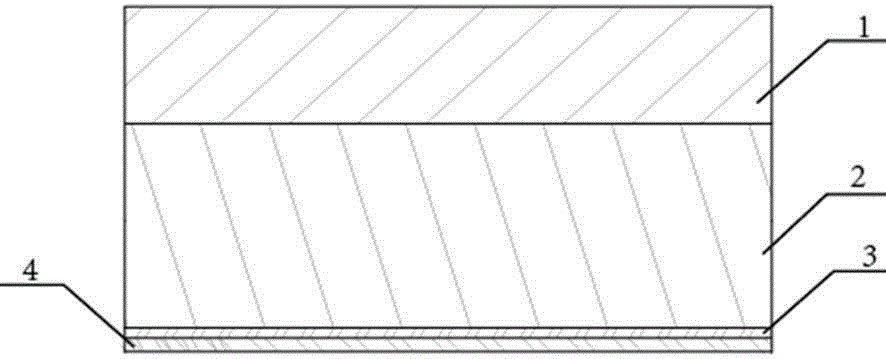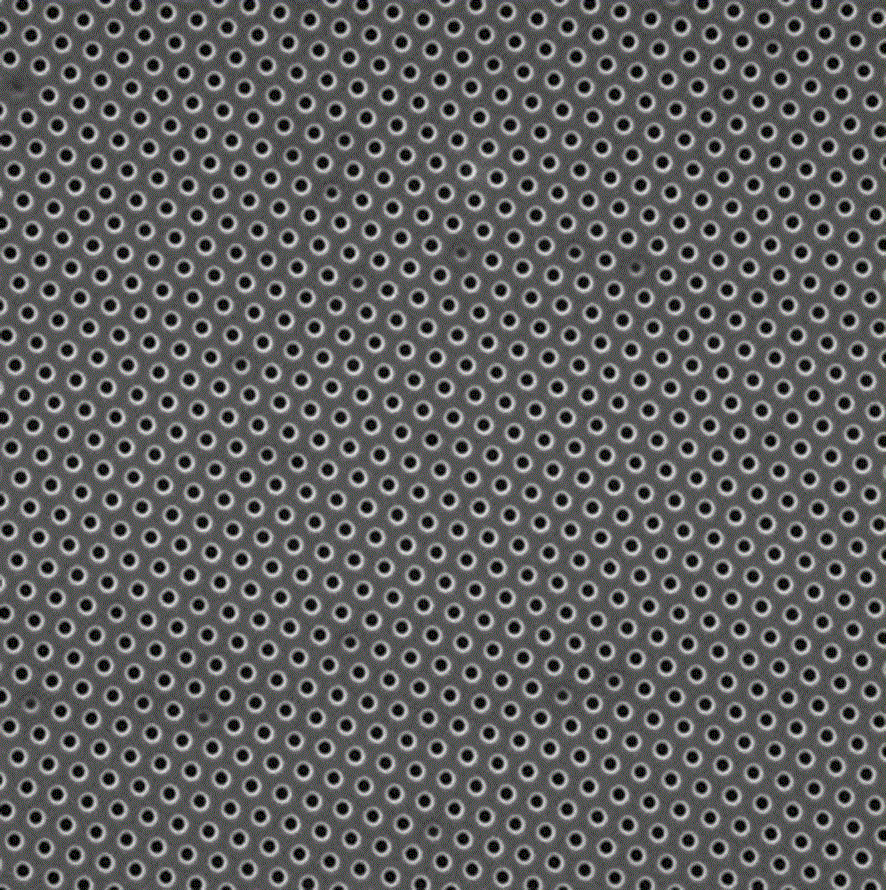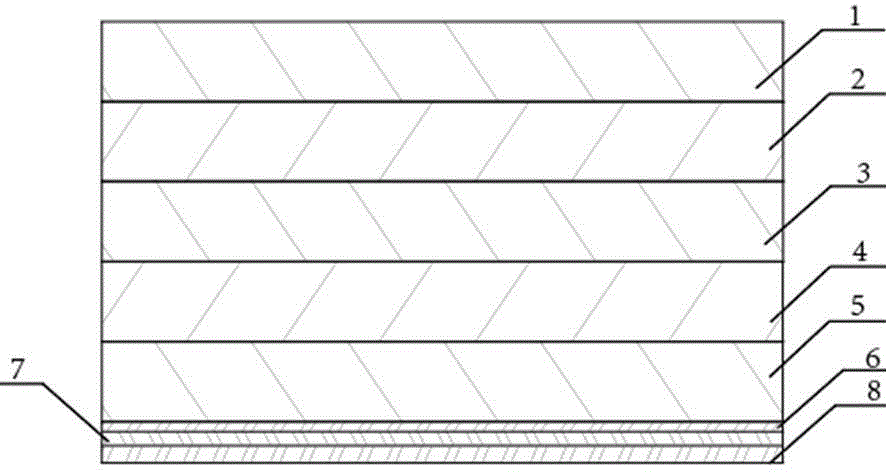Composite nanoimprinting soft template and manufacturing method thereof
A technology of nanoimprinting and soft template, which is applied in the direction of photomechanical equipment, patterned surface photolithography, optics, etc., can solve the problems of inability to carry out large-scale industrial application, low hardness of PDMS, and shedding of hard materials, and achieve Good hardness, improve poor hardness, good compatibility
- Summary
- Abstract
- Description
- Claims
- Application Information
AI Technical Summary
Problems solved by technology
Method used
Image
Examples
Embodiment 1
[0048] (1) Pouring a layer of PDMS resin (GE Silicones company, the ratio of A and B components is 10:1) in the mold, and curing in vacuum at 60°C for 2 hours to obtain a PDMS resin layer with an elastic modulus of 3.0 MPa, which is the first One layer of PDMS resin layer; then cast a layer of PDMS resin on the first layer of PDMS resin layer, and obtain a PDMS resin layer with an elastic modulus of 10MPa after 4 hours of vacuum curing at 80 ° C, which is the second layer of PDMS resin layer; by 2 The PDMS resin layer constitutes the elastic layer.
[0049] (2) Spin-coat an anti-adhesive agent (1H, 1H, 2H, 2H-perfluorodecyltrichlorosilane) on the surface of the silicon wafer template; spin-coat a UV resin system on the surface of the master template after anti-adhesive treatment, and expose it to ultraviolet light for 2 minutes , the energy of ultraviolet light is 1500mJ / cm 2 After curing, the UV resin layer is obtained, which is the first layer of UV resin layer; then t...
Embodiment 2
[0054] (1) Pouring a layer of PDMS resin (GE Silicones company, the ratio of A and B components is 9:1) in the mold, and curing in vacuum at 60°C for 3 hours to obtain a PDMS resin layer, which is the first PDMS resin layer; then Pouring a layer of PDMS resin on the first layer of PDMS resin layer, the temperature is 70°C and vacuum curing for 2 hours to obtain a PDMS resin layer, which is the second layer of PDMS resin layer; then pour a layer of PDMS resin on the second layer of PDMS resin layer , the temperature is 80°C and vacuum cured for 2.5 hours to obtain a PDMS resin layer, which is the third PDMS resin layer; layer, which is the fourth layer of PDMS resin layer; then cast a layer of PDMS resin on the fourth layer of PDMS resin layer, the temperature is 150 ℃ vacuum curing for 2 hours to obtain the PDMS resin layer, which is the fifth layer of PDMS resin layer; The elastic layer of the layer PDMS resin layer; the modulus of elasticity of the first layer of PDMS resin ...
Embodiment 3
[0060] (1) Pouring a layer of PDMS resin (GE Silicones company, the ratio of A and B components is 9.5︰1) in the mold, the temperature is 70 ℃ and vacuum curing for 2 hours to obtain the PDMS resin layer, which is the first layer of PDMS resin layer; Then pour a layer of PDMS resin on the first layer of PDMS resin layer, the temperature is 80 ° C for 3 hours after vacuum curing to obtain a PDMS resin layer, which is the second layer of PDMS resin layer; then pour a layer of PDMS on the second layer of PDMS resin layer Resin, the temperature is 150 ℃ vacuum curing for 4 hours to obtain a PDMS resin layer, which is the third layer of PDMS resin layer; obtain an elastic layer comprising 3 layers of PDMS resin layers; the elastic modulus of the first layer of PDMS resin layer is 4.0MPa , with a thickness of 0.5mm; the modulus of elasticity of the second PDMS resin layer is 8.0MPa, and the thickness is 0.5mm; the modulus of elasticity of the third PDMS resin layer is 12.0MPa, and th...
PUM
| Property | Measurement | Unit |
|---|---|---|
| thickness | aaaaa | aaaaa |
| thickness | aaaaa | aaaaa |
| thickness | aaaaa | aaaaa |
Abstract
Description
Claims
Application Information
 Login to View More
Login to View More - R&D
- Intellectual Property
- Life Sciences
- Materials
- Tech Scout
- Unparalleled Data Quality
- Higher Quality Content
- 60% Fewer Hallucinations
Browse by: Latest US Patents, China's latest patents, Technical Efficacy Thesaurus, Application Domain, Technology Topic, Popular Technical Reports.
© 2025 PatSnap. All rights reserved.Legal|Privacy policy|Modern Slavery Act Transparency Statement|Sitemap|About US| Contact US: help@patsnap.com



